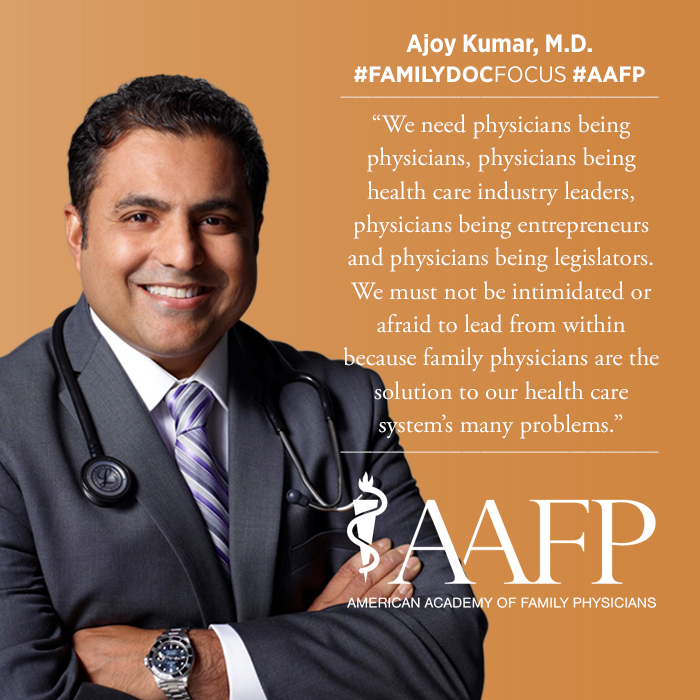Leading From Within the Health Care System
November 05, 2018, 11:18 am David Mitchell – It wasn't long after he earned his medical degree that Ajoy Kumar, M.D., figured out that he wanted to do more in health care than just practice medicine.

He also wanted -- and felt compelled -- to lead.
"I was a first-year resident when I realized the limitations I had as a family physician working in a clinic," Kumar said. "I could write prescriptions for patients and recommend treatment, but my patients couldn't necessarily get to, or afford, or consistently take those medications or treatments because of systems-level and financial issues. It didn't matter how much I wanted to treat their hypertension or diabetes, the system worked against them. There were too many entities that were working in silos rather than collaborating.
"Instead of getting angry at those entities for failing to coordinate resources and communicate with one another to help my patients and me, I felt I needed to work on this from within."
Kumar's path on the leadership track accelerated when he attended the AAFP's National Conference of Special Constituencies (now the National Conference of Constituency Leaders, or NCCL) as a new physician delegate in 2010.
"NCCL was it for me," he said. "I saw that I wasn't the only person dealing with these issues. I found support and encouragement and met Academy leaders."
Fast forward eight years, and Kumar has become a state and national leader himself. Now 44, he has served as an AAFP delegate to the AMA Young Physicians Section and president of the Southern Medical Association, which is made up of 16 states and the District of Columbia. He currently represents his state in the AAFP Congress of Delegates and is wrapping up his term as president of the Florida AFP.
As chief medical officer for Bayfront Health in St. Petersburg, Kumar works with others to improve quality and modernize clinical practice initiatives for a 480-bed, Level 2 Trauma Center with a Level 3 Regional Perinatal Intensive Care Center, two residency programs (family medicine and OB/Gyn) and a sports medicine fellowship.
"It's important to have family physicians in leadership positions," said Kumar, who also is medical director of a free clinic, as well as chair for quality for a health care group that offers home health care for seniors and assisted-living facilities. "We have the greatest breadth and scope because we do OB, pediatrics and even, in some instances, continue to assist in general surgery. We're the ideal individuals who understand how health care should be delivered in an operationally cost-efficient and coordinated manner that improves the patient's experience without driving the workforce into the ground."
Kumar also has carved out a niche as an expert in disaster preparedness and recently completed a four-year term as chief medical officer of the Florida 3 Disaster Medical Assistance Team, a stint that spanned the 2015 Ebola outbreak, the 2016 Democratic National Convention and the 2017 U.S. presidential inauguration.
Kumar, a clinical assistant professor of family medicine at Florida State University College of Medicine in Tallahassee and voluntary faculty at the University of South Florida Morsani College of Medicine in Tampa, said that at this point in his career, he is transitioning from tackling the aforementioned hands-on activities himself to identifying, guiding and mentoring others into leadership roles.
"We need physicians being physicians, physicians being health care industry leaders, physicians being entrepreneurs and physicians being legislators," he said. "We must not be intimidated or afraid to lead from within because family physicians are the solution to our health care system's many problems."